8 Best Types of Squat Variations (with Pictures!)
Few movements are as fundamental as that of a squat - be it in daily activity, resistance training or athletic competition, a squatting movement can be found practically anywhere.
However, when speaking specifically of the squat as a form of resistance exercise, narrowing down which squat exercise to pick can be difficult due to the sheer number of variations.
In this article, we’ve listed the most popular and most effective variants of the standard squat exercise available. Among the most recommendable are the back squat, the front squat, and the pistol squat.
What Makes an Exercise a Squat?
Although most individuals are familiar with what a squatting motion looks like, it can be difficult to differentiate what makes an exercise a “squat variation” and what is something else entirely.
The standard bodyweight squat exercise can be classified as a bilateral compound movement involving flexion at the knees and hips during the descending phase, as well as dorsiflexion of the ankles; Of course, the opposite mechanics are used during the ascending phase.
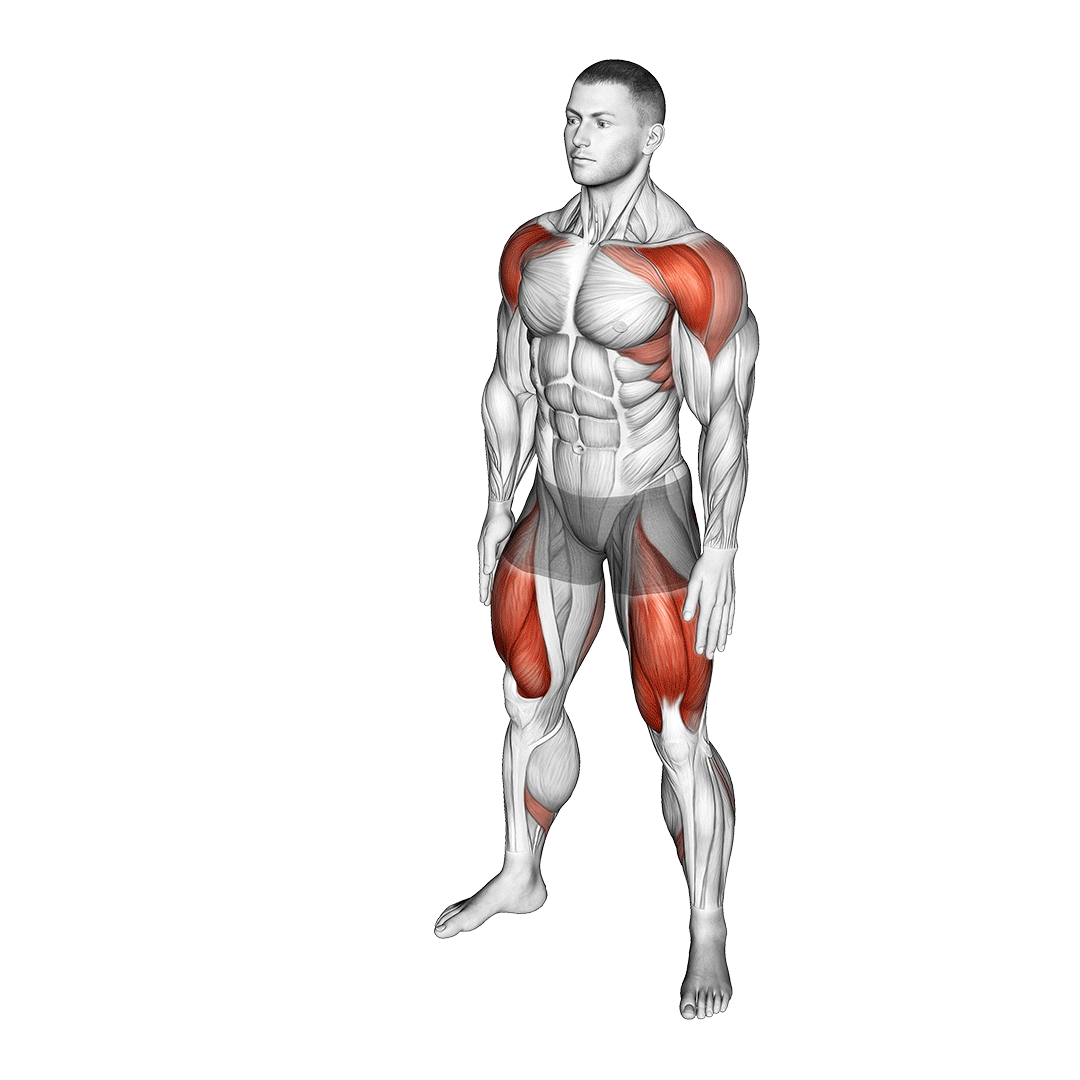
This description is rather imperfect however, as exercises like the deadlift share similar characteristics - of which are obviously not squat variations.
One further aspect to help differentiate squat variant exercises is to check for the starting position and the depth to which the pelvis descends. If the exercise begins in a relatively upright position and involves the lifter lowering their hips to a point where they are parallel with the knees, then it may be considered a squat.
Squat Variations
1. The Back Squat
The first and most quintessential example of a squat is the traditional barbell back squat.
Popularized by powerlifting and many modern conditioning coaches, the back squat is a bilateral compound movement usually performed for low volume and a high amount of weight.
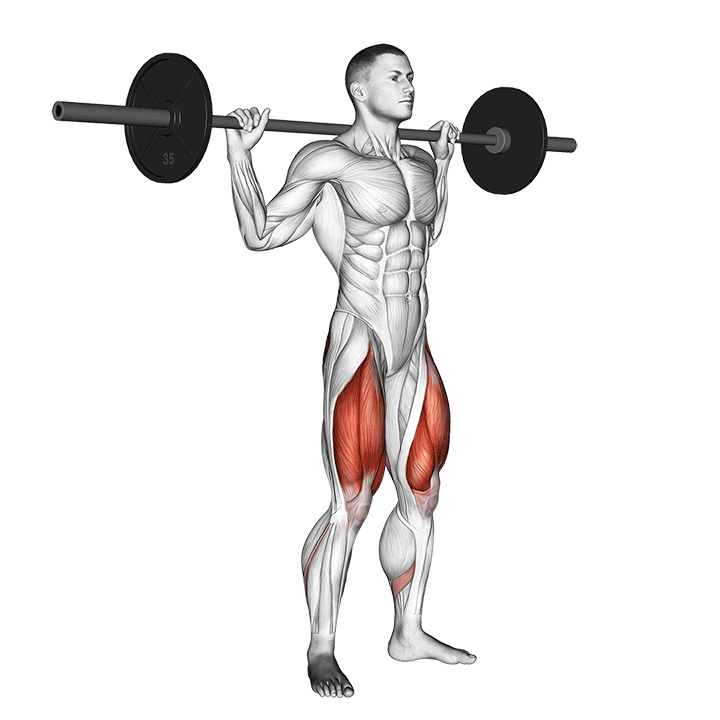
The back squat follows much the same standard movement pattern and stance as a standard bodyweight squatting movement, only with the lifter balancing a loaded barbell atop their back - hence the name “back” squat.
Barbell back squats are known to be as effective at building strength and mass as they are for being technically complex. It is best for novices to first master unweighted squatting mechanics before attempting the back squat.
Muscles Worked
Back squats primarily work the glutes, quadriceps and hamstrings.
Benefits as a Squat Variation
Back squats are the “base” variation of squat, as it features much the same mechanics as the natural squatting movement pattern. This means it is excellent for building the fundamental strength and muscle memory needed in numerous non-gym activities.
Furthermore, back squats are considered to be the “king of exercises” due to their effectiveness at building strength, power and mass throughout the lower body.
How-to:
Setting the feet hip-width apart with a loaded barbell balanced atop their back, the lifter will contract the core and keep their spine in a neutral position as they bend at the knees and push their pelvis backwards.

This should lower their body downwards, where they will continue to squat down until the top of the hips are parallel with the knees.
From this point, the lifter pushes through their heels and rises back to a starting position to complete the repetition.
2. The Split Squat
As their name implies, split squats are a variation of squat performed while in a split position. Unlike other forms of squat, this makes them a unilateral exercise with more emphasis on one leg at a time.
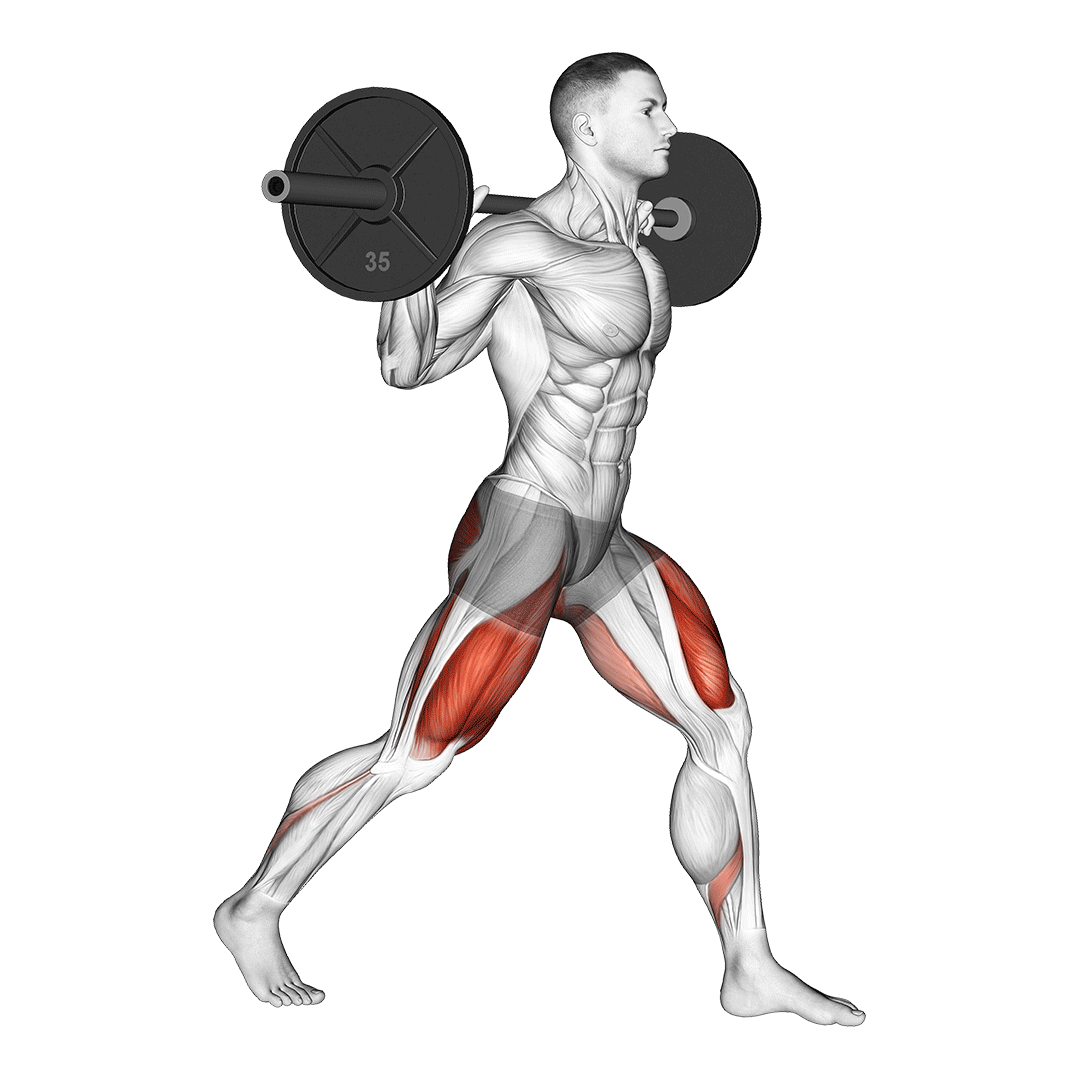
Split squats are most often performed by athletes or functional fitness enthusiasts, as they allow for improvements in not only strength and mass, but also many other abilities left underdeveloped by exercises like the back squat.
Split squats can be performed entirely with bodyweight resistance, but are also done with barbells, dumbbells or with the use of certain resistance machines.
Muscles Worked
Traditional split squats primarily target the quadriceps femoris, but also target the glutes, calves and hamstrings to a somewhat lesser extent as well.
Benefits as a Squat Variation
Split squats are of note for being unilateral, meaning that one leg is emphasized at a time. This reduces how much weight is needed to reach optimal training intensity, and comes with a host of other advantages like improved balance, bodily control and greater mobility of the hips.
How-to:
Standing with one foot planted a step away and the other stretched out behind them, the lifter will push their hips slightly forwards and bend the knees of both legs.
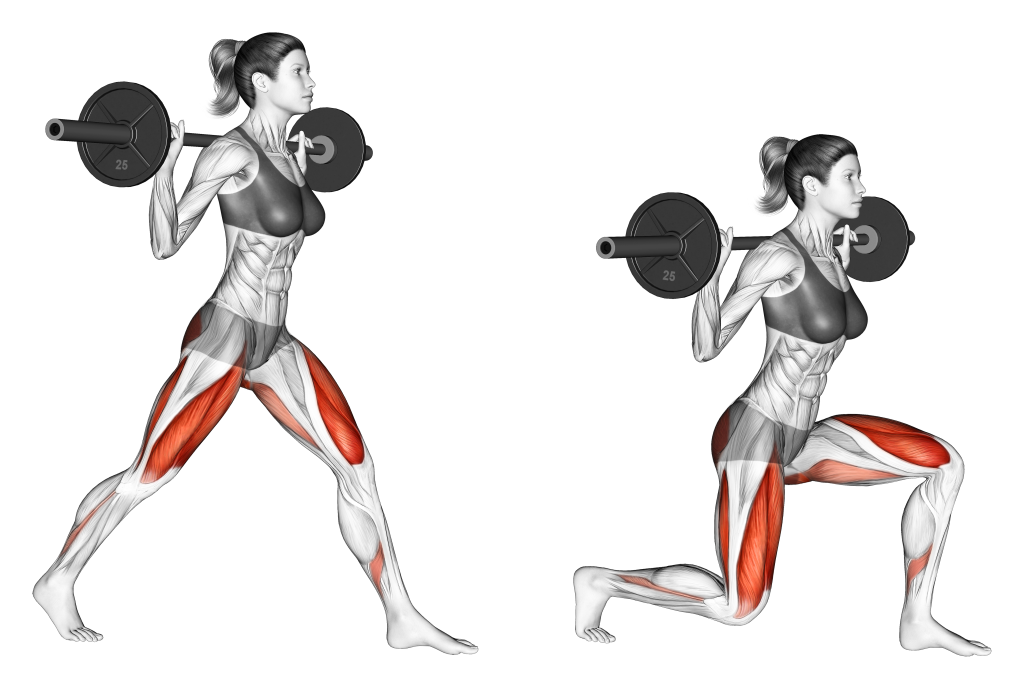
The lifter will lower themselves until the knees have reached a 90 degree angle, being careful to keep their torso upright and the back leg stretched as they do so.
To complete the repetition, the lifter drives through their foreleg and rises back up, switching the position of their feet.
3. The Sumo Squat
Sumo squats are a variation of squat where the lifter takes a far wider stance than would be used with most other variants. This maximizes emphasis on the posterior chain muscles while also shortening the exercise’s range of motion.
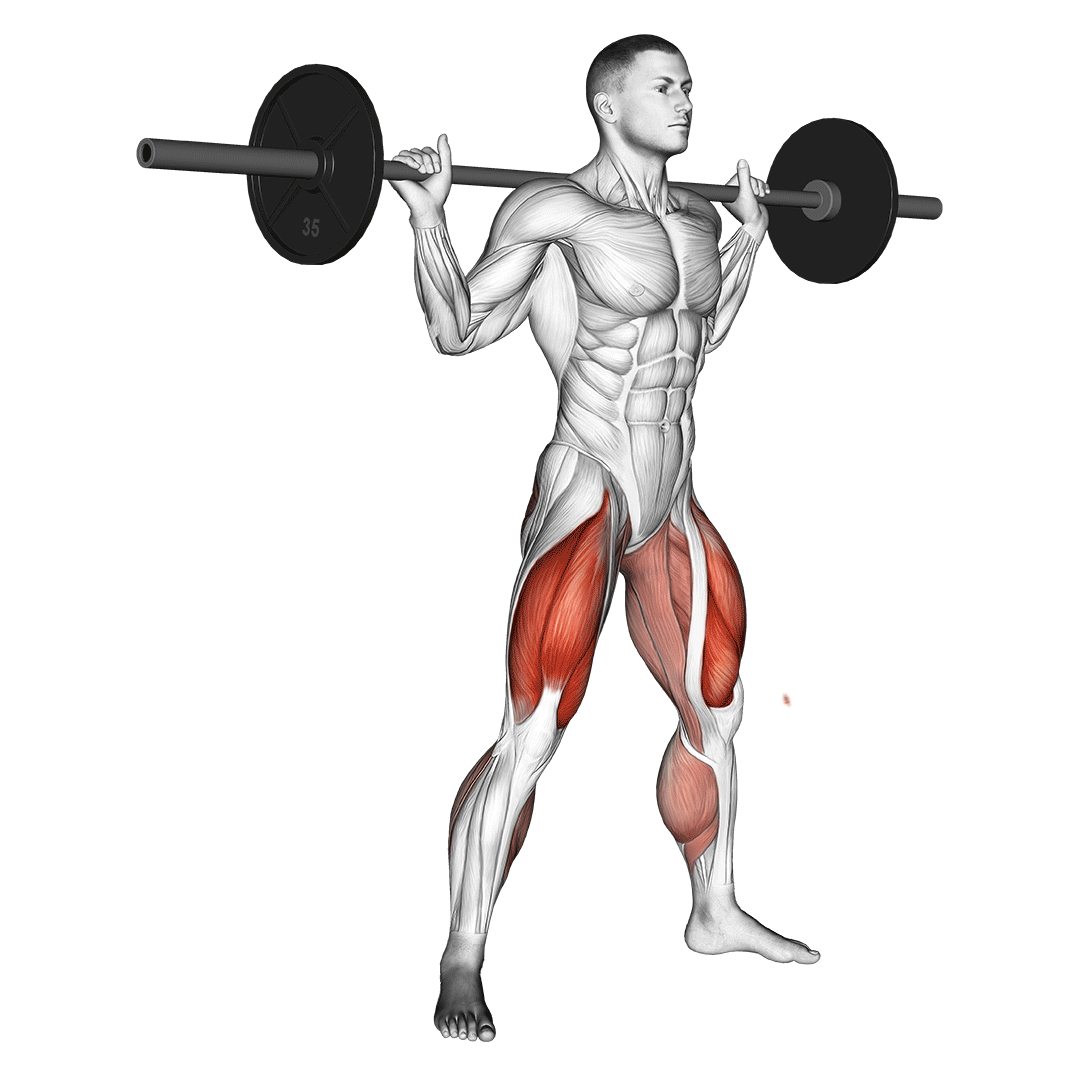
Like the back squat, the sumo squat is a bilateral compound movement often performed for low repetition volume and significant weight. The two are frequently compared due to their similarity in mechanics, so much so that the sumo squat can essentially be considered a wider stance back squat.
Sumo squats may be performed with bodyweight resistance, a barbell or any other type of weighted equipment. However, they excel particularly well with heavy kettlebells, as the space between the legs creates the perfect opportunity to use one.
Muscles Worked
Sumo squats primarily work the hamstrings and glutes, but will also recruit the quadriceps to a lesser extent as well.
Benefits as a Squat Variation
Sumo squats are excellent for building strength and mass in the posterior chain without straining the quadriceps - greatly reinforcing lower body power and explosiveness.
In addition, the sumo squat is noted for having a shorter range of motion and greater usage of hip hinging mechanics, both of which can be beneficial in the right scenario.
How-to:
Standing upright with the feet set wider than hip-width apart, the lifter will brace their core and keep their chest upright as they hinge at the hips. This should lower their torso downwards as if taking a seat, with the knees bending alongside the movement.
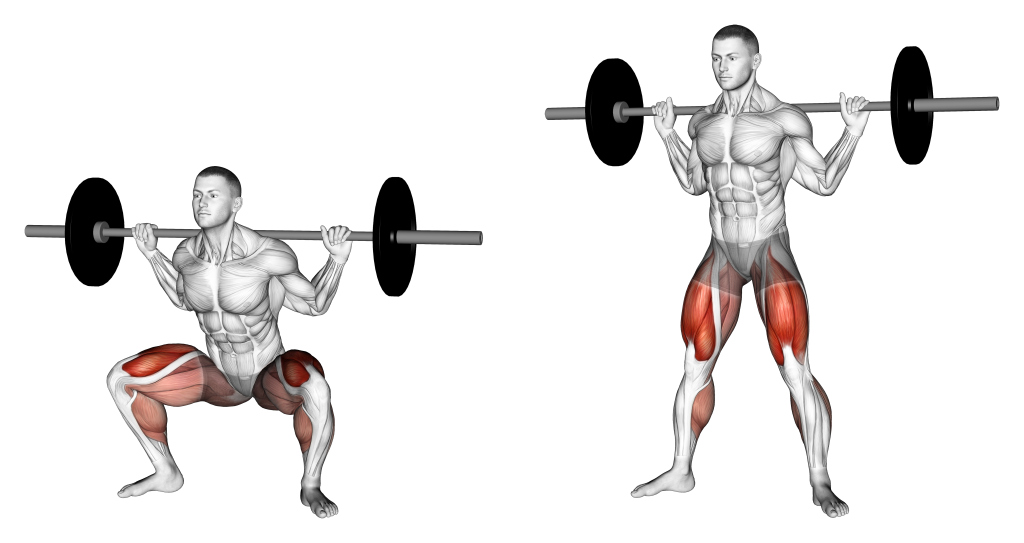
Once the pelvis is at parallel depth, the lifter drives through their heels and pushes their hips forward so as to rise back up and complete the repetition.
Throughout the exercise, the toes are pointing somewhat outwards, with additional attention paid to ensure the knees are tracking in a similar angle as well.
4. The Front Squat
The front squat is a conventional squat variation where a loaded barbell is placed atop the front of the torso, altering muscular emphasis and the width of the lifter’s stance in comparison to the standard back squat.
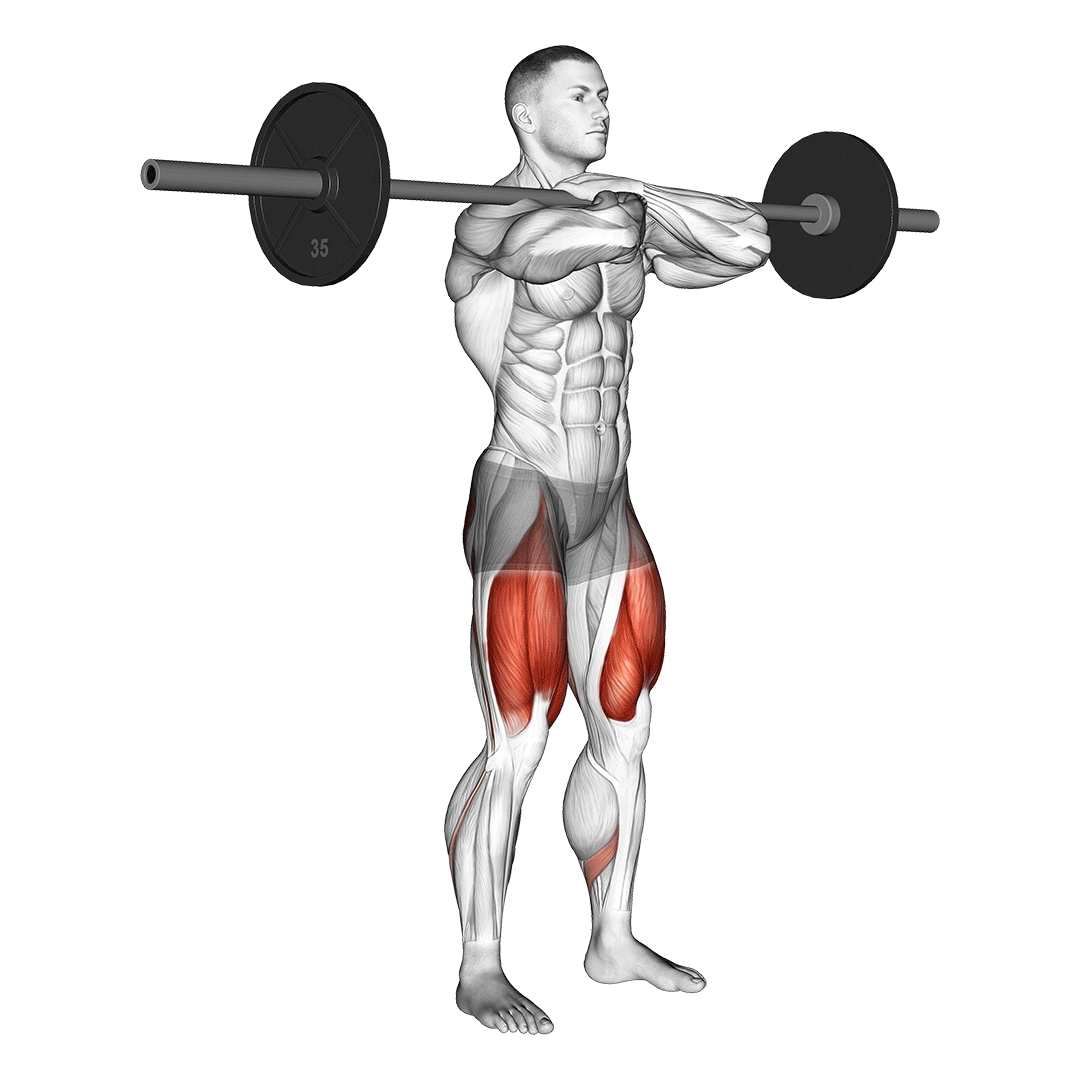
The front squat is most often performed as a primary method of training the quadriceps femoris, as its narrower stance and unique placement of the barbell make it particularly useful for targeting the quads.
Front squats are also occasionally used by powerlifters or bodybuilders as a secondary exercise to the heavier back squat.
Muscles Worked
Front squats primarily work the quadriceps, but will also target the glutes and hamstrings as well.
Due to the barbell being atop the chest shelf, stabilizer muscles that are not normally worked by other squat variations will also be employed during a front squat set.
Benefits as a Squat Variation
The main benefit of front squats lies in its unique angle of resistance and mechanics. These allow it to not only target the quadriceps in a highly intense fashion, but also to maintain a similar level of difficulty and intensity to the back squat with far less weight.
In addition, the front squat is also considered to be a far more spine-friendly alternative to the back squat and other squat variations like it.
How-to:
To perform a repetition of the front squat, the lifter will need to stand upright with a loaded barbell held across the top of their chest shelf, fingers curled beneath it and the elbows pointing forwards as they do so.
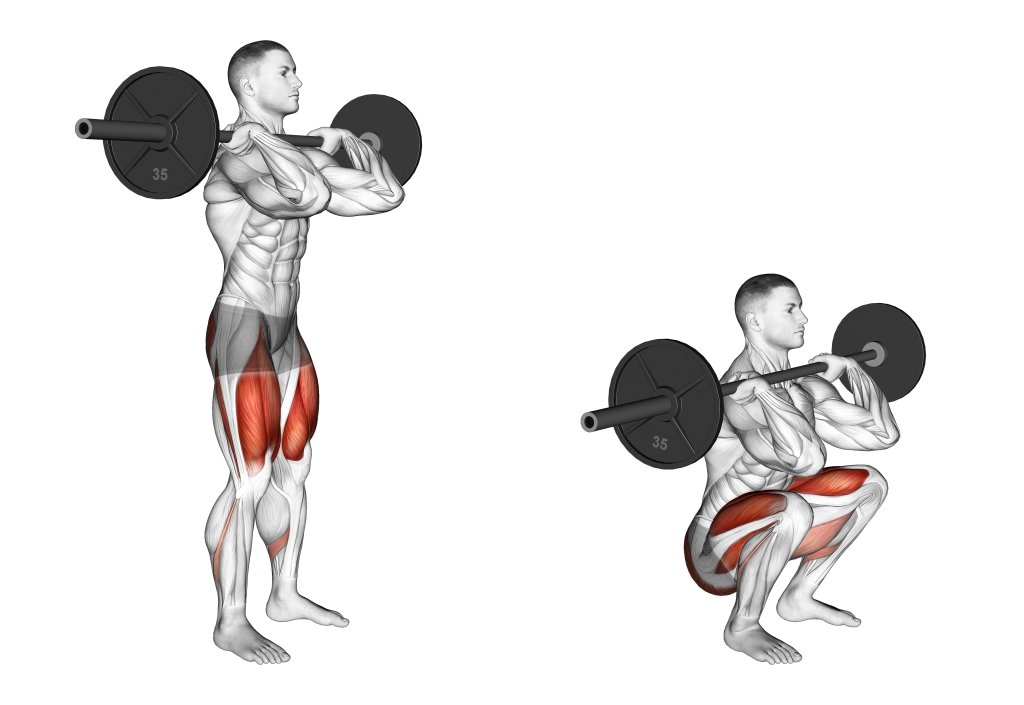
As is the case with most other squat variations, the chest should be pushed outwards and upwards, with the spine in a neutral position and the core contracted. The front squat places the feet approximately hip-width apart, and is generally considered to be more narrow in stance to the back squat.
Now in the appropriate stance, the lifter will push their pelvis back and bend at the knees - taking extra care to keep the torso upright, which will be more difficult with the front squat due to the position of the bar.
Once reaching parallel depth, the lifter will simply drive through their heels and return to a standing position so as to complete the repetition.
5. The Pistol Squat
The pistol squat is yet another unilateral squat variation of great intensity. This time, it is a calisthenics exercise that requires considerable balance and coordination to pull off.
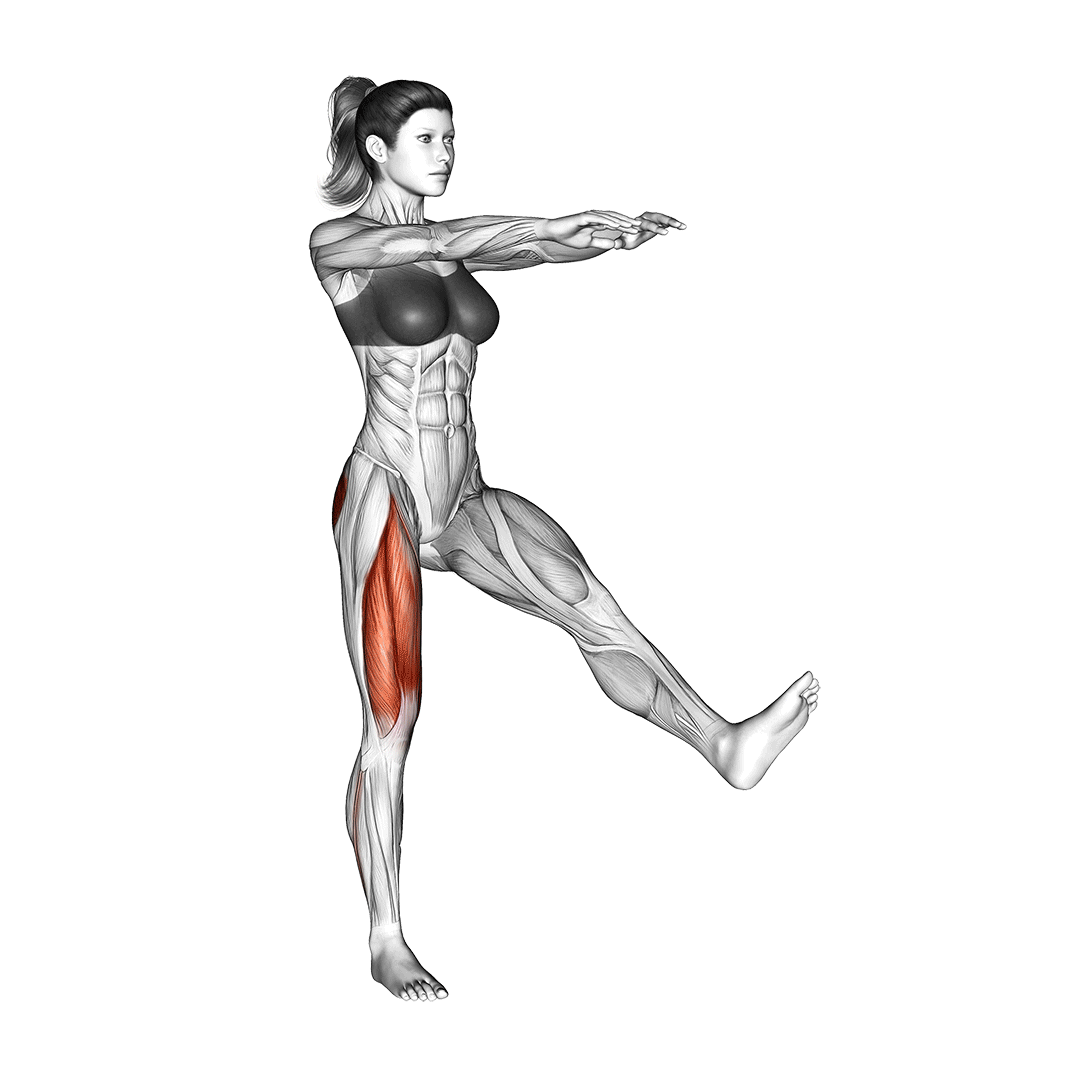
Pistol squats (occasionally called single-leg squats) are a multi-joint lower body exercise most often performed without the use of weights due to the sheer difficulty of each repetition.
As one may guess from the name, pistol squats involve the lifter descending into a one-legged squat as they extend their arms and remaining leg forwards, creating the shape of a pistol when viewed from the side.
Muscles Worked
Pistol squats target the entirety of the lower body to great intensity.
Benefits as a Squat Variation
Pistol squats are particularly beneficial for advanced athletes without access to training equipment, as they are perfectly intense with bodyweight resistance alone. In addition, pistol squats are also known for developing the performer’s sense of balance, coordination and strength in their lower body.
How-to:
To perform a repetition of the pistol squat, the lifter will stand upright with their feet set approximately hip-width apart, spine neutral and core contracted.
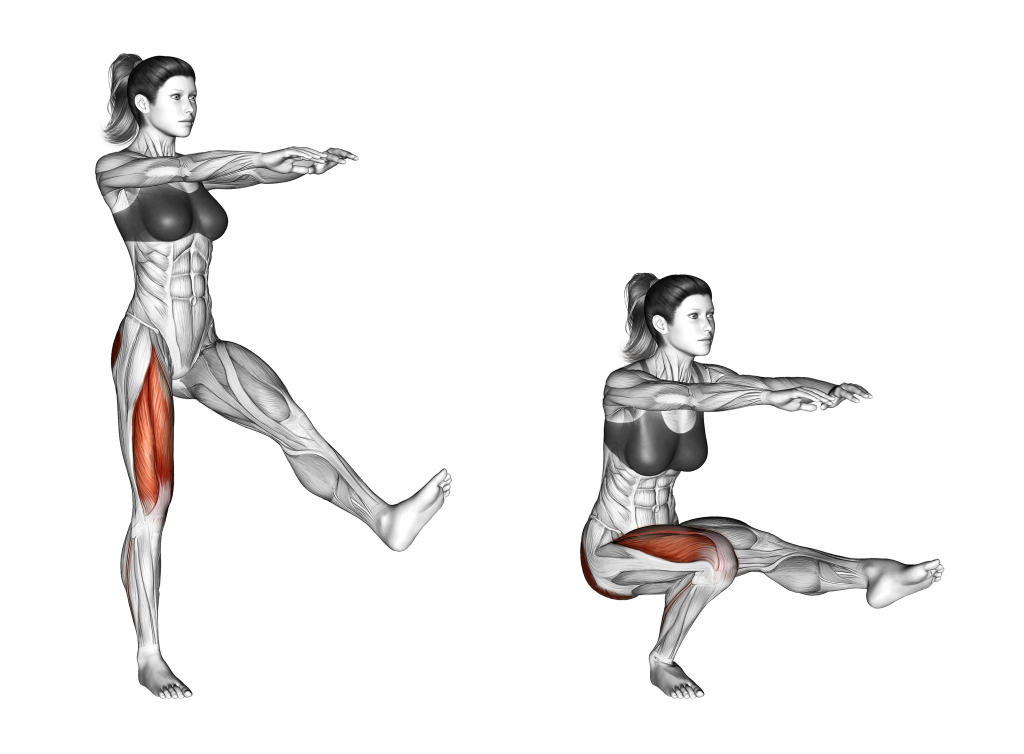
Now in the correct stance, the lifter will raise one leg off the ground and extend it forwards, also raising their arms in the same direction for better stability.
Now balanced on one leg, the lifter will bend the knee of their standing leg and push their pelvis somewhat backwards - lowering themselves until reaching the maximum depth they can remain stable in.
From this point, they will drive through the heel and raise themselves back to a standing position so as to complete the repetition.
6. The Zercher Squat
Zercher squats are most often compared to the front squat as they both share placement of the barbell at the front of the torso. Unlike front squats however, the Zercher squat is considerably more intense, and rests the barbell in the crook of the elbows rather than the chest shelf.

Otherwise, the Zercher squat is much the same as most barbell squat variations - multi-joint, marked use of knee and hip flexion, and a slightly wider than hip-width stance.
Muscles Worked
Zercher squats prioritize the quads, but will also work the hamstrings and glutes. In addition, unlike most other squat variants, the Zercher squat will also work the muscles of the arms in a static manner.
Benefits as a Squat Variation
Zercher squats are of particular note due to their increased emphasis on the quadriceps - creating an opportunity for stronger and larger quads in a manner that also reinforces back squat depth and positioning.
Zercher squats are also a favorite among strongman competitors due to its similar position and mechanics to the atlas stone event that is commonplace in strongman meets.
How-to:
To perform a repetition of Zercher squats, the lifter should put themselves in a squat stance with a somewhat wider foot positioning, and a loaded barbell resting in the crook of their elbows at approximately diaphragm-height.

Paying extra attention to the angle of their torso, the lifter will then bend at the knees and push their pelvis backwards - lowering themselves until hitting the appropriate depth.
The elbows will descend between the legs as they reach the bottom of the movement, with some individuals showing some minor rounding of the upper back. This is otherwise normal, so long as the lower back is neutral in comparison.
Once reaching depth, the lifter drives through their feet and rises back to a standing position - thereby completing the repetition.
7. The Hack Squat
The hack squat is a machine-based squat variation meant to emphasize the quadriceps in a safe and efficient manner. It is performed in a standing position as the lifter is positioned at an incline, creating the perfect angle of resistance for training the quadriceps.
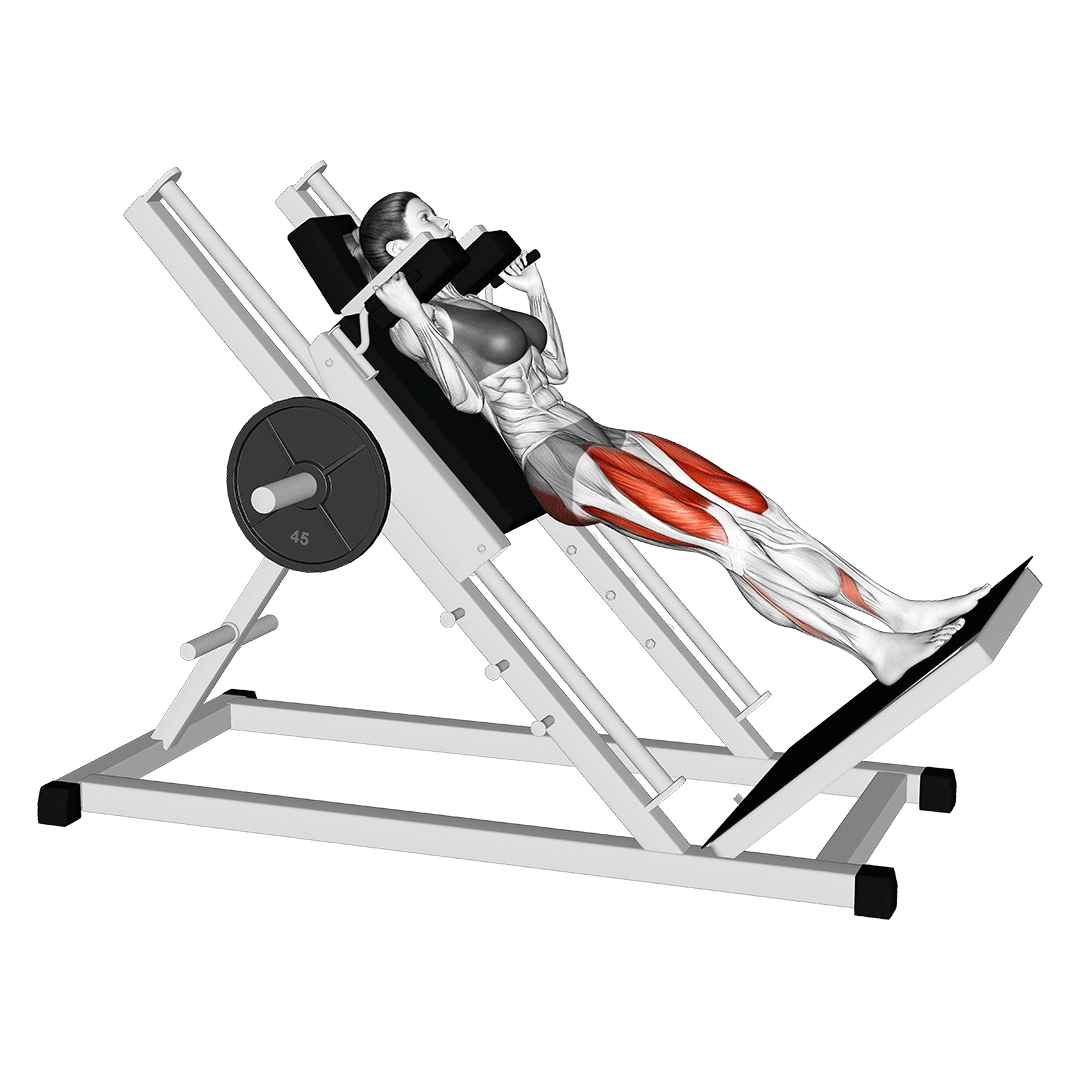
The hack squat’s counterpart, the reverse hack squat, focuses on the exact opposite musculature - those being the glutes and hamstrings.
Like most other squat variants, the hack squat is an intense compound exercise involving knee and hip flexion during the descending phase.
Muscles Worked
Hack squats primarily work the quadriceps femoris, but will also target the glutes and hamstrings to a somewhat lesser extent.
Benefits as a Squat Variation
Hack squats are often favored as a secondary movement in workouts due to their relatively low impact, low risk of injury and ease of programming.
Furthermore, the adjustability and machine-based nature of the hack squat makes it a suitable alternative to most other quad-focused squat variations.
How-to:
To perform a repetition of the standard machine hack squat, the lifter will stand within the hack squat machine, their shoulders against the pads and feet set slightly wider than hip-width apart at the center of the baseplate.
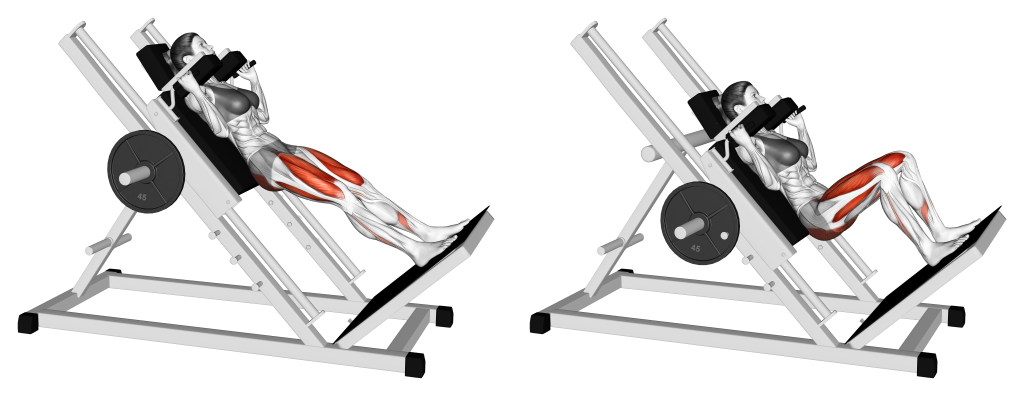
Now in the correct position, the lifter will raise the sled so as to disengage the safety mechanism before bending at the hips and knees simultaneously.
Lowering themselves to the appropriate depth, the lifter will pause for a moment before driving their feet into the plate and pushing the sled back up. The repetition is considered to be complete once the lifter has returned to a standing position.
8. The Belt Squat
The belt squat is a squat variation most often used for targeting the muscles of the lower body without needing to load the spine or tax the upper body’s musculature.
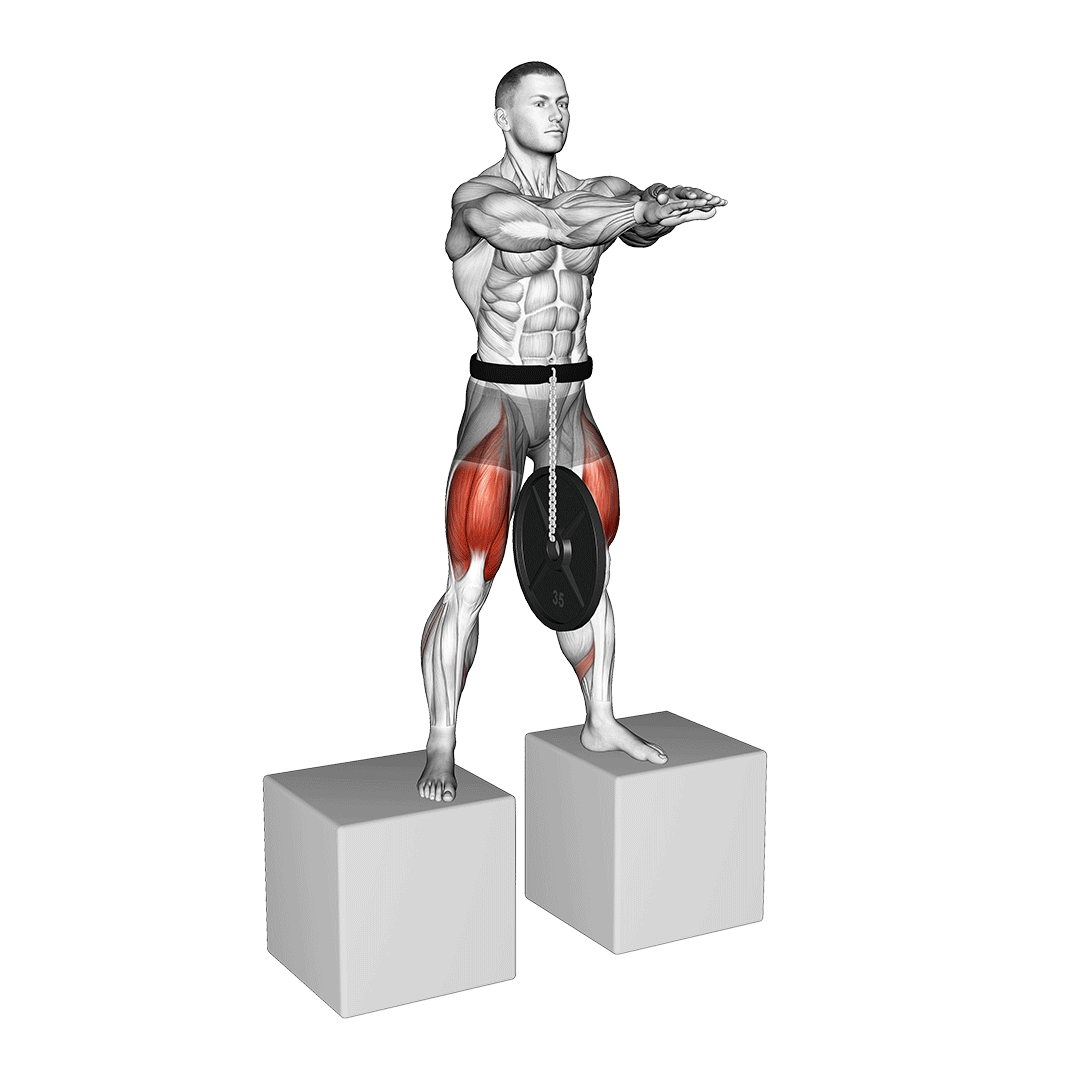
Belt squats are primarily performed with the use of a belt squat machine, but a dip belt and set of weight plates can also be used as an alternative. For the most part, both types of belt squat are the same, with the primary difference being stabilization and convenience.
Muscles Worked
Belt squats work the quadriceps, glutes and hamstrings to a moderate level.
Unlike most other squat variations, the upper body is not involved - even in an isometric capacity. This means more energy and focus can be shifted to working the leg muscles.
Benefits as a Squat Variation
Apart from being significantly more spine-friendly than most other squat variants, the belt squat is considerably useful for building squats-specific mobility, stability and form adherence.
In addition, the machine variation can achieve a unique angle of resistance that helps emphasize different muscles, depending on the lifter’s positioning.
How-to:
To perform a belt squat, the lifter will wrap either the machine’s belt or a loaded dip belt around their waist, assuming a standard squat stance as they do so.

Beginning the repetition, the lifter will keep their torso upright but relaxed as they bend at the knees and push their hips backwards. This should lower the body until the appropriate depth has been reached, where the lifter will push through their heels and rise back to their starting position.
Using a dip belt for the belt squat may be somewhat limiting in terms of squat depth. To fix this, stand atop a pair of stable boxes or a similar pair of platforms so as to allow the weights to dip between them.
Which Squat Should You Pick?
With the numerous variations of squat available to you, picking the right exercise can get pretty overwhelming.
In truth, there is no “best” squat variation, as each holds their own respective place within a training plan. The back squat is the quintessential basic squat exercise, but athletes may see better results from split squats - and strongman competitors the Zercher squat.
We advise starting by first mastering basic squatting mechanics with a bodyweight squat, then picking whichever squat best fits your training goals. Don’t forget to account for difficulty and complexity when doing so.
References
1. Laliberte, Richard., George, Stephen C.. The Men's Health Guide To Peak Conditioning. United States: Rodale Books, 1997. ISBN: 9780875963235, 0875963234
2. Erdağ, Deniz & Yavuz, Hasan. (2020). Evaluation of Muscle Activities During Different Squat Variations Using Electromyography Signals. 10.1007/978-3-030-35249-3_114.
3. Illmeier, Gabriel. (2023). Variations of The Bilateral Barbell Squat: A Brief Review. Journal of Sports Science & Medicine. 7. 10.29011/2576-9596.100196.
